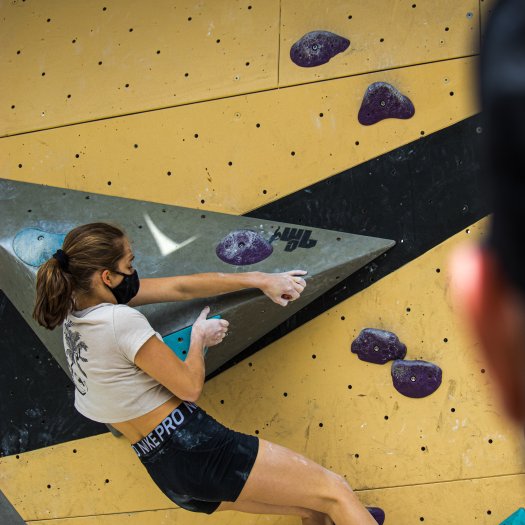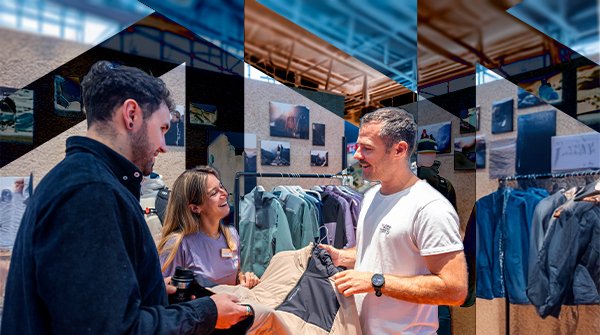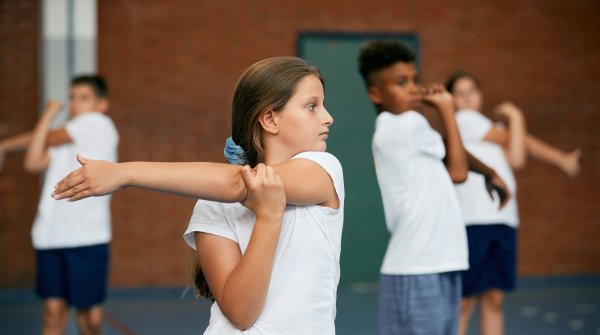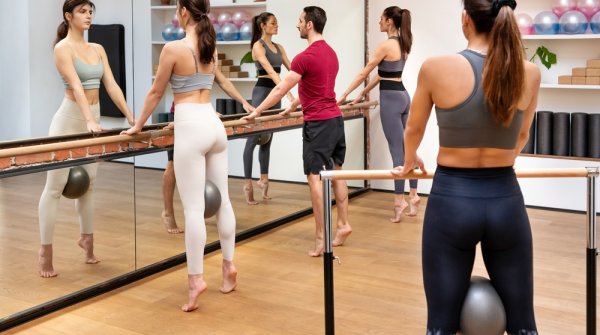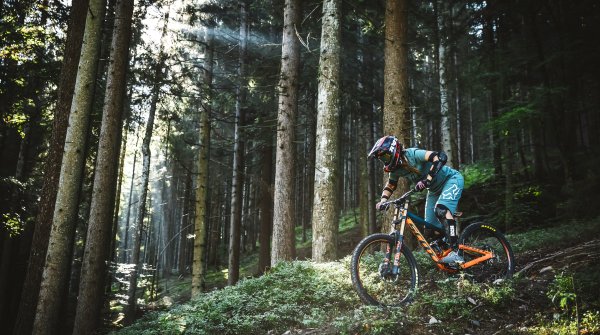Before we provide tangible reasons for doing this sport, we'll explain what the term means and what makes it different from sport climbing, as a little warm-up so to speak. Then, with maximum power, well warmed up and with the appropriate prior knowledge, we take on the wall in six moves ...
Boulder comes from the English and means boulder - which pretty much explains the sport. Because: bouldering means climbing on boulders or artificial walls at jump height - which is why you don't need a rope, a harness or a partner. Incidentally, bouldering has been around for a long time, but the sport made a huge leap forward in the 1950s at the latest. It was at this time that the American John Gill revolutionized climbing. He is considered the father of today's bouldering sport.
In the 1970s, bouldering became a separate discipline of sport climbing. The number of boulderers has been growing since the 1990s and the sport has experienced a real hype since the 2000s, especially in cities and metropolitan areas. In summer 2021, bouldering stars such as Adam Ondra, Alex Megos and co were part of the Olympic Combine, the Olympic climbing triathlon consisting of lead climbing, speed climbing and bouldering , for the first time at the Olympic Games in Tokyo.
While you lift weights in the gym, in the bouldering hall you work exclusively with your own weight in combination with tactical considerations. Finger, arm and leg strength are used to hold holds, kick and follow a line or route with logical tricks and moves. Depending on the difficulty, visual pre-planning, technique, tricks and ingenuity are required.
Bouldering requires a flexible, supple body paired with good maximum strength that can be called up in a few powerful grip sequences. Well? Exactly. We have arrived at the trend and the addictive potential: bouldering beautiful, intelligently bolted routes is challenging, and when the first small or large successes are achieved, it makes you hungry. Hungry for more, for more difficult, more difficult. And then, as if by magic, a few yoga sessions are added to the training to make the body more supple and the fingers are suddenly trained in the office with the help of a tennis ball.
All with the aim of experiencing this unique symbiosis of aesthetics, strength and dynamics even more intensively. Anyone who has ever watched boulderers at a competition, how they jump onto the holds almost effortlessly and bend their bodies like artists from the Chinese State Circus, knows what we are talking about here.
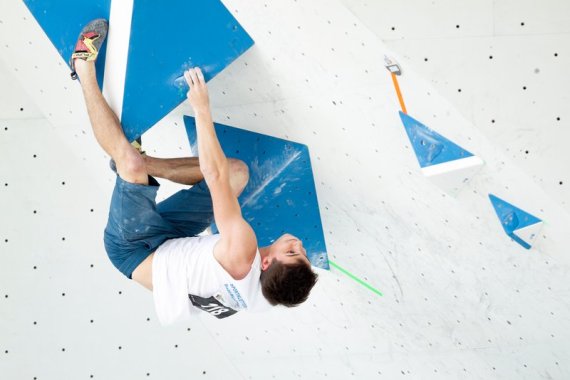
What a dog owner's dog is to a boulderer, his project on the wall is to him. So less: "Have you seen my dog?" and more: "How do you do the move? How do you climb? How can you hold it? Are you jumping on the next hold or what?" Bouldering is interactive and therefore the location to meet new, like-minded people. The holds replace the dog as an anchor or source of communication, so to speak. Especially in large cities with their anonymity, bouldering is ideal for a nice chat and for getting to know people in an uncomplicated way.
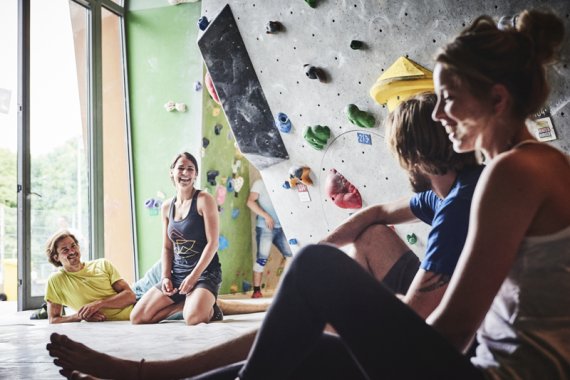
Indoor bouldering does not require a partner, nor do you have to register in advance for a time or reserve a court. Thick, soft mats replace the spotters, i.e. partners, who are irreplaceable on the boulder outside. The walls are all at jump height, from one meter to 4.5 meters. If you don't have the courage, look for another route close to the ground. A session can be perfectly integrated into everyday life. From the office to the gym, or from the gym to the office, without having to coordinate your time with a sports partner. Individuality in its purest form.
Even boulderers who are just starting out can simply go to the bouldering hall, pay the entrance fee, organize rental shoes and get started. This is because gripping is stored in the mind as a natural reflex. The colors show the way, the rest comes naturally and of course with the help of communication with like-minded people.
This sport, practiced indoors, only requires climbing shoes and a chalk bag with magnesia. When buying climbing shoes, you should make sure they fit well. The shoes should fit snugly, both at the heel and in the toe area, to give you a good feeling when climbing. When trying them on, you should take plenty of time and try them out on the climbing wall, which good sports retailers provide for testing. Climbing shoes should be worn without socks to ensure perfect power transmission.
Tip: If the rental shoes from the gym fit well, ask for this model in the store straight away, this will make the search much easier. A chalk bag with magnesia is indispensable when bouldering. Sweaty hands make gripping difficult, the white magnesia powder absorbs the sweat - for perfect grip on the holds. When it comes to clothing, comfortable sports pants or tights and a shirt that fits well, doesn't slip and follows your every move are sufficient. A warm fleece jacket or hoodie helps to keep your muscles warm between bouldering sessions.
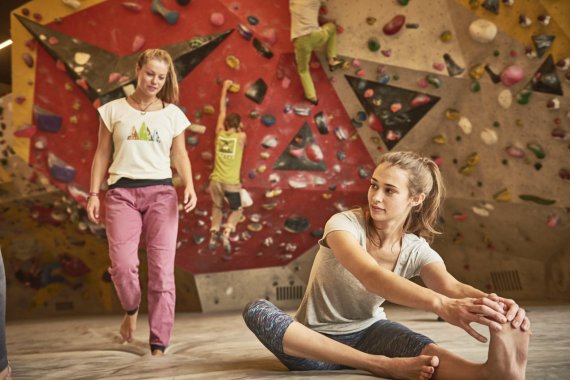
Good bouldering facilities employ route builders who know their trade and ensure that even beginners have fun without being overwhelmed. The boulders are sorted by color and correspond to different levels of difficulty, ranging from easy to very difficult. Anyone can try anything. However, it is advisable to gradually increase the difficulty, as each time you boulder you train and strengthen your muscles - important if you want to try more difficult routes. You learn the technique as well as the necessary dynamics and physical effort in a playful way. But also by watching and actively asking questions.
The training effect of bouldering is outstanding. After just a few weeks, you will notice a different body feeling: the body becomes firmer and muscles are built up. If you want to do more, you will automatically go to the campus board and include sit-ups in your training for a strong core. Incidentally, you will also automatically be able to focus better as a result of memorizing grip sequences and recalling climbing techniques to the point. Bouldering only works if your body and mind are in harmony and work together in the here and now.
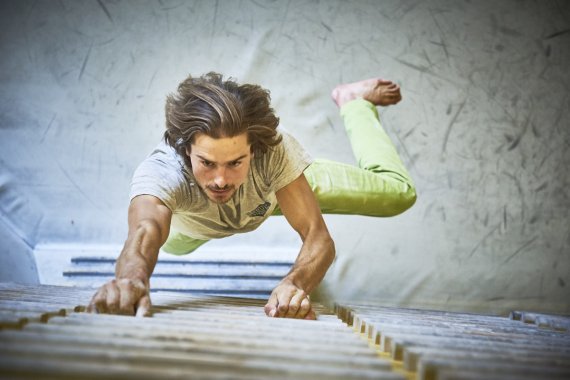
There are great climbing and bouldering facilities, especially in large cities and urban areas. These are either run by private individuals or are so-called DAV climbing facilities. Both are open to everyone, but members of the Alpine Club get a reduced entrance fee at DAV climbing/bouldering facilities. The prices are usually between 10 and 15 euros. Those who visit such facilities more often benefit from monthly or annual vouchers, which all halls offer.
It is definitely worth checking the prices on the respective homepage in advance, not least because some operators offer a happy hour rate, for example. Otherwise, the bouldering facilities are built according to the latest guidelines and equipped with ergonomic holds and footholds. Recently, more and more facilities are also offering a training area where athletes can prepare themselves with the help of climbing-specific training equipment.
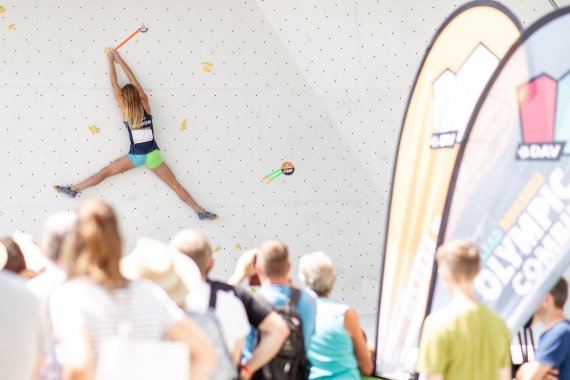
Although no ropes or harnesses are used in bouldering and it is possible to climb at high levels of difficulty, the risk of injury to the athlete is limited. The most important reason for this is the maximum climbing height of around four meters. In the bouldering hall, a thick floor mat also protects against injury in the event of a fall.
This also makes bouldering the perfect introduction to the sport for kids. They can let off steam here. Bouldering is considered family-friendly, precisely because even the youngest children can get on the wall. The operators of the halls are geared towards children and often offer special event packages.
Each boulder consists of a defined number of holds and footholds, with the start and finish marked. Most so-called boulder problems consist of four to eight holds, and more than twelve are not permitted in competitions. The distance on the wall can therefore be overcome relatively quickly if you succeed.
This means that there are always successes and thus the necessary motivation boost to tackle the next problem with concentration.
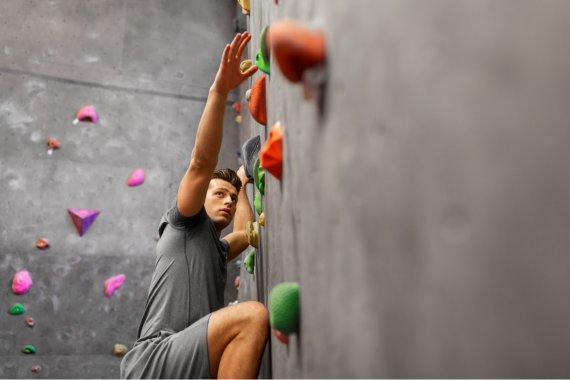
At least in the big cities, bouldering is now possible all year round, regardless of the weather. This development is mainly due to the enormous popularity of this climbing sport. It is worthwhile for operators of climbing gyms to offer separate bouldering areas in which new routes are constantly being marked out. This means that boulderers can pursue their sport indoors in winter or when it rains, for example, but can also climb outdoors when conditions are better.
Many outdoor sports are linked to a minimum age or cannot be practiced without considerable prior training. Bouldering is different - anyone can try their hand at the wall, regardless of age, gender or previous training. Boulders are available in all levels of difficulty, and color coding helps with classification in advance. Short introductory courses are also offered in all halls, where the correct technique is explained. As newcomers can watch the experienced climbers bouldering, they can learn some of the finer points.
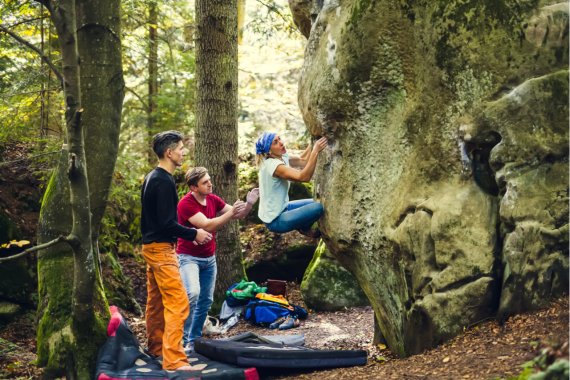
Anyone can boulder! The rules are simple and you learn the technique by trying it out. What's more, no specific safety instruction or know-how is required to practise this sport. All you need is a pair of climbing shoes, which can be rented in any climbing hall, and some magnesia for your hands. A special and possibly expensive outfit is also not necessary; good old gym shorts and a T-shirt will suffice.
Classic sport climbing is different: Here, athletes need a climbing or rope partner who A) has experience and sufficient belaying and rope techniques and B) has time. Furthermore, the equipment required for sport climbing is more extensive: in addition to climbing shoes, you also need a climbing harness, belay device and rope. And very importantly, you need to know how to use the belay device and rope, i.e. you need to receive thorough instruction from an experienced boulderer or, even better, take part in a training course, otherwise the risk of accidents increases exponentially.
- ISPO awards
- Mountain sports
- Bike
- Design
- Retail
- Fitness
- Health
- ISPO Job Market
- ISPO Munich
- ISPO Shanghai
- Running
- Brands
- Sustainability
- Olympia
- OutDoor
- Promotion
- Sports Business
- ISPO Textrends
- Triathlon
- Water sports
- Winter sports
- eSports
- SportsTech
- OutDoor by ISPO
- Heroes
- Transformation
- Sport Fashion
- Urban Culture
- Challenges of a CEO
- Trade fairs
- Sports
- Find the Balance
- Product reviews
- Newsletter Exclusive Area
- Magazine
